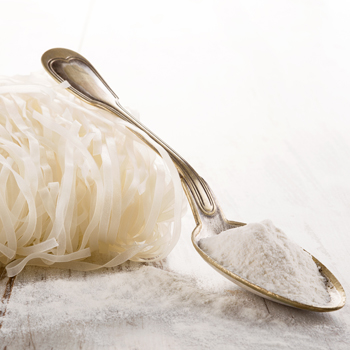สระแก้ว, 7 มิถุนายน 2562 – พิธีเปิด “ศูนย์ทำความสะอาดและฆ่าเชื้อโรคยานพาหนะบรรทุกสินค้าปศุสัตว์” ตามความร่วมมือระหว่างสมาคมผู้เลี้ยงสุกรแห่งชาติ บริษัท ไทยฟู้ดส์ กรุ๊ป จำกัด (มหาชน) บริเวณด่านกักกันสัตว์ กรมปศุสัตว์ จุดผ่านแดนถาวรบ้านเขาดิน ตำบลคลองหาด อำเภอคลอง จังหวัดสระแก้ว
กรมปศุสัตว์ นำโดยอธิบดีกรมปศุสัตว์ นายสัตว์แพทย์สรวิศ ธานีโต เป็นประธานในพิธีและรับมอบศูนย์ทำความสะอาดและฆ่าเชื้อโรคยานพาหนะบรรทุกสินค้าปศุสัตว์ ตามโครงการความร่วมมือกรมปศุสัตว์และภาคเอกชนผู้เลี้ยงสุกร โดยมีตัวแทนจากทั้งองค์การอาหารและเกษตรแห่งสหประชาชาติ และองค์การโรคระบาดสัตว์เข้าร่วมในพิธี
อธิบดีกรมปศุสัตว์ ได้กล่าวในพิธีเปิดว่า “วันนี้นับเป็นการบูรณาการทุกภาคส่วนอย่างยอดเยี่ยม ขอบคุณทั้ง FAO และ OIE ที่สนับสนุนความช่วยเหลือทางวิชาการและคำแนะนำต่างๆ ในการเฝ้าระวังป้องกัน ด้วยดีเสมอมา”
คุณสุรชัย สุทธิธรรม นายกสมาคมผู้เลี้ยงสุกรแห่งชาติ ได้กล่าวถึงการระบาดตั้งแต่เดือนสิงหาคม 2561 ที่ผ่านมา มีการระบาดจากจีนตอนเหนือ ไล่ลงมาที่ประเทศเวียดนามและกัมพูชา โดยตลอดเวลา สมาคมฯ และกรมปศุสัตว์ร่วมมือกันมาตลอด ให้ความรู้เรื่องโรค ระบบ Bio-security ตลอดจนความร่วมมือจากภาคเอกชนในการสร้างศูนย์ทำความสะอาดและฆ่าเชื้อโรคยานพาหนะขนส่งสินค้าปศุสัตว์ ขอบคุณสมาคมผู้เลี้ยงสัตว์กัมพูชา และที่ต้องขอบคุณอย่างยิ่ง คือ บริษัท ไทยฟู้ดส์ กรุ๊ป จำกัด (มหาชน) ที่สนับสนุนทุนในการสร้างศูนย์ที่สระแก้วแห่งนี้ พวกเราจะต้องร่วมมือกันต่อไปเพื่อความยั่งยืนของผู้เลี้ยงสุกรทั่วประเทศ
ดร.วันทนีย์ กัลล์ประวิทธ์ จาก FAO ได้กล่าวว่า “การระบาดของโรคอหิวาต์แอฟริกันในสุกรมีผลกระทบต่อความมั่นคงทางอาหารของโลกอย่างมาก ยินดีที่เห็นความร่วมมือระหว่างทุกภาคส่วนในเมืองไทย ขอบคุณกรมปศุสัตว์ สมาคมผู้เลี้ยงสุกรแห่งชาติ ราชการส่วนท้องถิ่น กองกำลังทุกภาคส่วน ที่ร่วมมือกันป้องกันโรค นับตั้งแต่การระบาดครั้งแรกในเอเชีย”
Dr.Ronello Abila จาก OIE กล่าวว่า “ยินดีที่ได้มาพบเห็นความร่วมมือกันในลักษณะของ Public Private Partnership ที่มีประสิทธิภาพสูงมากของทั้งภาครัฐและเอกชนไทยในครั้งนี้ นับเป็นแบบอย่างที่ดีในระดับนานาชาติสำหรับประเทศที่ยังไม่มีการระบาด”
ทั้งนี้ ศูนย์ฯ ดังกล่าวจะเป็นจุดผ่านแดนหลักในการส่งสุกรมีชีวิตสู่ประเทศกัมพูชา ปัจจุบันเฉลี่ยวันละ 1,500-2,000 ตัว ซึ่งการผลิตสุกรของกัมพูชาในปัจจุบันยังคงไม่เพียงพอต่อความต้องการในการบริโภค(โดยประมาณ 8,000-10,000 ตัวต่อวัน ตามการประเมินของสมาคมผู้เลี้ยงสัตว์กัมพูชา)
ปัจจุบัน นโยบายกรมปศุสัตว์ได้ให้ความสำคัญต่อระบบความปลอดภัยทางชีวภาพกับฟาร์มสุกรในทุกขนาดในประเทศไทย และยังให้การสนับสนุนการเฝ้าระวังป้องกันกับประเทศเพื่อนบ้านด้วย โดยการระบาดในประเทศกัมพูชาถือว่ามีประสิทธิภาพในการควบคุมพื้นที่ในการระบาดได้อย่างยอดเยี่ยมที่สามารถควบคุมการระบาดและจำกัดพื้นที่เพียงจังหวัดรัตนคีรีซึ่งมีพื้นที่ติดชายแดนตอนใต้ของประเทศเวียดนาม เท่านั้น
จากการรายงานล่าสุดขององค์การโรคระบาดสัตว์ระหว่างประเทศ (OIE) ตั้งแต่วันที่ 3 เมษายน – 3 มิถุนายน 2562 ประเทศกัมพูชามีการระบาดเพียง 9 ครั้ง ในพื้นที่ 2 เขต 1 จังหวัด เท่านั้น
สำหรับศูนย์ฯ ในลักษณะเดียวกันตามโครงการความร่วมมือระหว่างกรมปศุสัตว์กับสมาคมผู้เลี้ยงสุกรแห่งชาติ อีก 3 แห่ง จะมีการเปิดอย่างเป็นทางการที่จังหวัดมุกดาหารและจังหวัดนครพนม ในวันที่ 13 และ 14 มิถุนายน 2562 ตามลำดับ ส่วนที่ด่านเชียงแสน จังหวัดเชียงรายจะเปิดเป็นลำดับสุดท้าย
ดร.วันทนีย์ จาก FAO ได้ฝาก 3 ประเด็นให้กับผู้เลี้ยงสุกรสำหรับหนึ่งสิ่งที่ยังไม่เกิดขึ้น และเกิดขึ้นแล้ว ที่อาจจะเป็นความเสี่ยงที่หลายคนคิด แต่ยังไม่ดำเนินการ ประกอบด้วย
1. เตรียมพื้นที่ Compartment เพื่อรองรับกรณี “เกิด” ในสิ่งที่ไม่อยากให้เกิด เพื่อรักษาความมั่นคงทางอาหารทั้งในระดับชาติและนานาชาติ
2. อยากให้ติดตามเครือข่ายการใช้เศษอาหารเลี้ยงสุกร ที่ถือว่าเป็นความเสี่ยงที่ไม่อาจมองข้ามได้
3. การเลี้ยงหมูป่าที่กลายเป็นหมูพเนจร อาจเป็นสาเหตุแห่งการฝังตัวของเชื้ออย่างยาวนานได้










